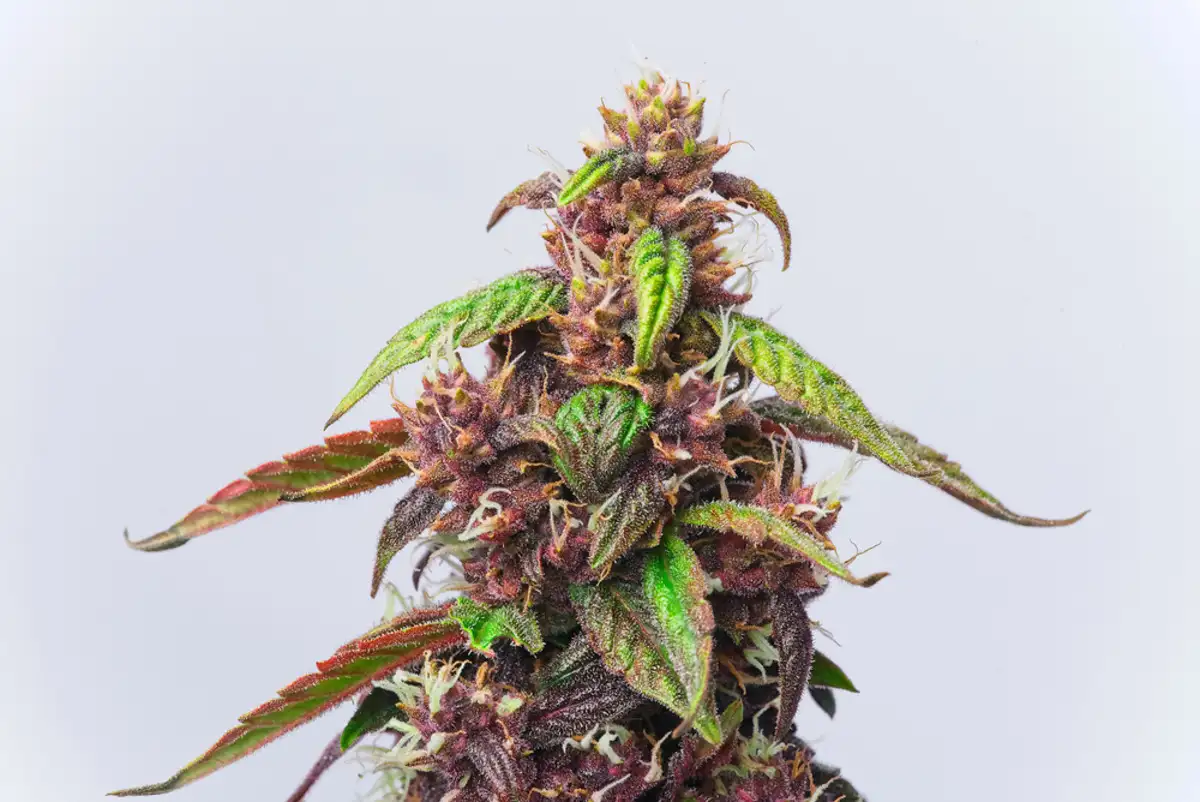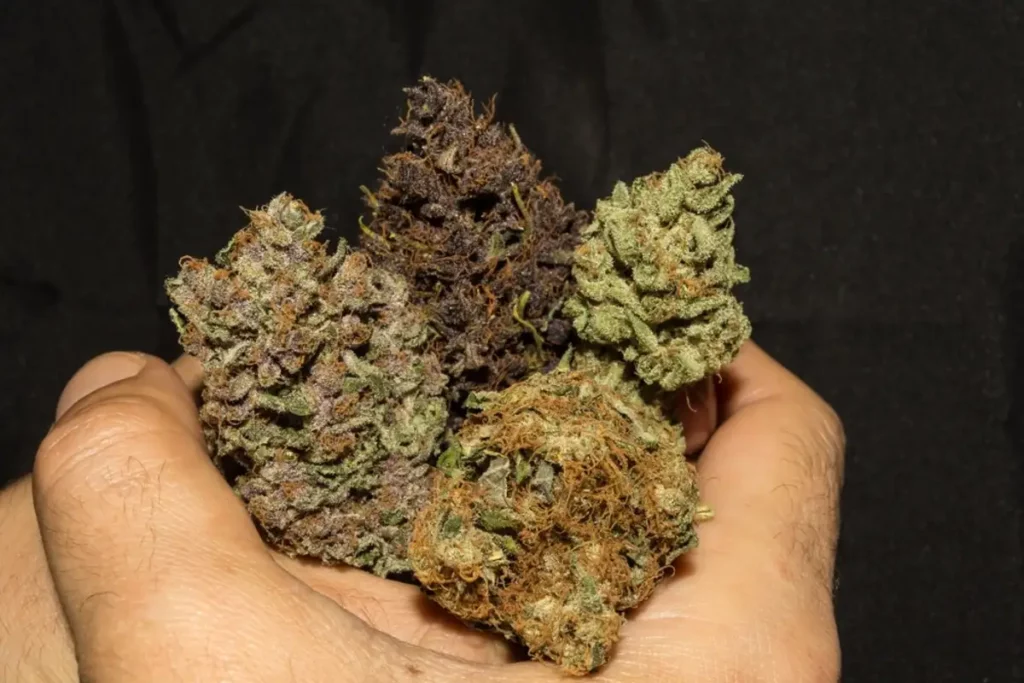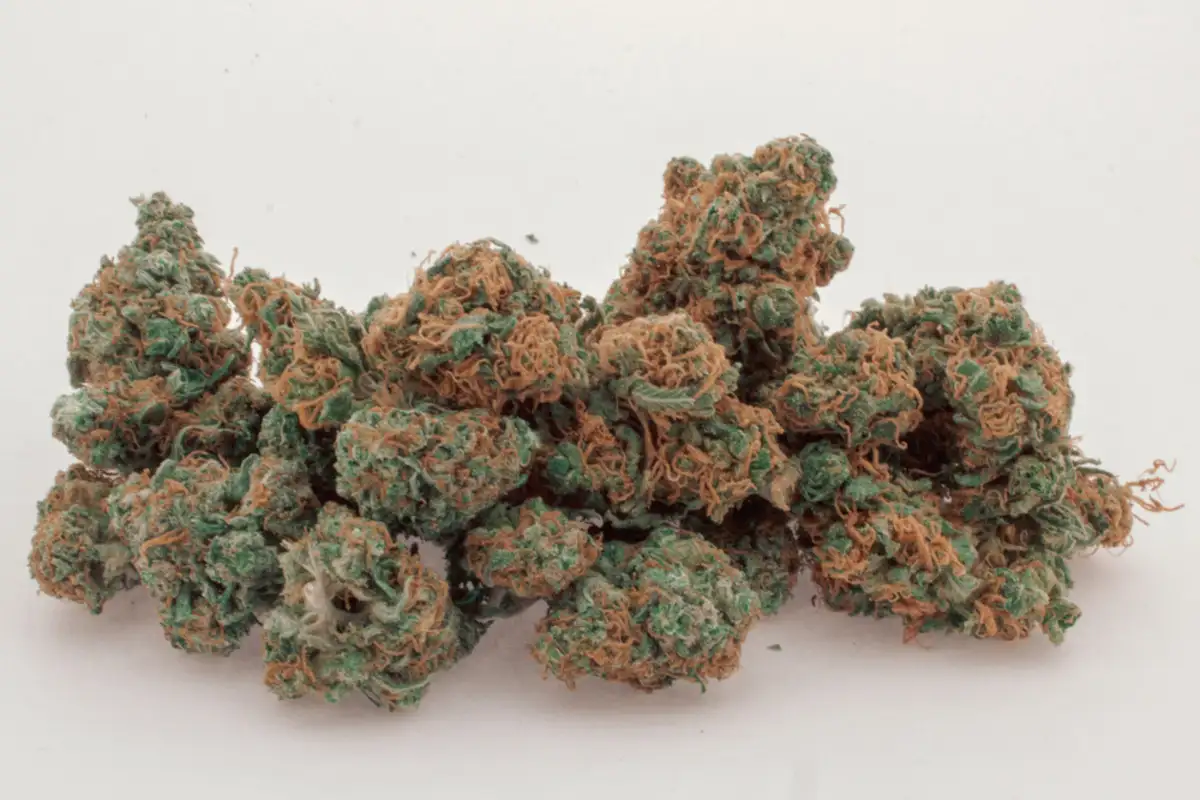When it comes to cannabis strains, there is a wide range of colors to choose from. From vibrant greens to deep purples, the visual appeal of cannabis is undeniable. But what about red cannabis strains? Are they truly red in color? This blog post aims to explore the fascinating world of red cannabis strains and unravel the truth behind their color variations.
In this post, we will delve into the genetics behind red cannabis strains, examine the significance of color in cannabis, and discuss why red strains may not always appear red in color. We will also provide tips on how to identify red cannabis strains and debunk common misconceptions surrounding their coloration.
Understanding the color variations in cannabis strains is essential for both cannabis enthusiasts and growers. The color of a strain can provide insights into its potency, flavor, and aroma. By understanding the factors that influence the color of cannabis, we can better appreciate and utilize the diverse range of strains available.
So, if you’ve ever wondered whether red cannabis strains are truly red in color or if there’s more to the story, this blog post is for you. Let’s unravel the mysteries of red cannabis strains and discover the truth behind their captivating hues.
Introduction to the Color Variations in Cannabis Strains
Cannabis comes in a wide array of colors, ranging from vibrant greens to deep purples and even shades of red. These color variations are captivating and add to the overall appeal of the plant. However, it’s important to understand that the color of cannabis is not purely for aesthetics; it can provide valuable information about the strain’s characteristics.
The color variations in cannabis are primarily influenced by the presence of pigments called anthocyanins and chlorophyll. Anthocyanins are responsible for the red, purple, and blue hues, while chlorophyll contributes to the green color. The combination and concentration of these pigments give each strain its unique visual characteristics.
The presence of anthocyanins in cannabis strains is influenced by a variety of factors, including genetics, growing conditions, and environmental stressors. Some strains naturally have a higher propensity for expressing red pigments, while others may require specific conditions to develop their red hues.
Understanding the color variations in cannabis strains can help us appreciate the complexity of the plant and make informed decisions when selecting strains for cultivation or consumption. In the following sections, we will focus specifically on red cannabis strains and explore the factors that contribute to their coloration. By gaining a deeper understanding of these factors, we can better appreciate the beauty and uniqueness of red cannabis strains.
Understanding Red Cannabis Strains
Red cannabis strains are a fascinating category within the world of cannabis. These strains are known for their distinctive red hues, which set them apart from the more common green or purple strains. In this section, we will explore what exactly red cannabis strains are, delve into the genetics behind their coloration, and provide examples of popular red strains in the market.
What are Red Cannabis Strains?
Red cannabis strains, as the name suggests, are strains of cannabis that exhibit a prominent red coloration in their leaves, buds, or both. This unique color variation is highly sought after by cannabis enthusiasts for its visual appeal and rarity. Red strains can range from having subtle reddish undertones to vibrant, eye-catching shades of crimson.
The Genetics Behind Red Cannabis Strains
The genetic makeup of cannabis plays a significant role in determining its color variations, including red strains. The presence of specific genes and the expression of pigments like anthocyanins contribute to the red hues in cannabis.
Anthocyanins are a group of pigments found in many plants, including cannabis. These pigments are responsible for the red, purple, and blue colors seen in various plant species. In red cannabis strains, the presence of anthocyanins leads to the development of their unique red color.
Genetic factors, such as the presence of specific anthocyanin-related genes, influence the ability of a cannabis strain to produce red pigments. Some strains are genetically predisposed to express higher levels of anthocyanins, resulting in a more intense red coloration.
Examples of Red Cannabis Strains
There are several popular red cannabis strains available in the market today. These strains showcase the vibrant and captivating red hues that cannabis enthusiasts admire. Some well-known red strains include:
- Red Congolese: Originating from the Democratic Republic of the Congo, Red Congolese is a sativa-dominant strain known for its reddish-orange pistils and vibrant red coloration.
- Red Dragon: This hybrid strain is a cross between Utopia Haze and West Himalayan Kush. It exhibits beautiful reddish-purple hues throughout its flowers and leaves.
- Red Poison Auto: A popular autoflowering strain, Red Poison Auto is known for its deep red-purple coloration. It is a cross between Green Poison and a purple-flowered autoflowering strain.
- Red Diesel: This sativa-dominant hybrid strain offers a unique combination of the legendary NYC Diesel and Californian favorite California Orange. It often displays reddish-orange pistils and hints of red in its buds.
These examples are just a glimpse of the diverse range of red cannabis strains available. Each strain possesses its own unique characteristics and effects, making them a fascinating choice for cannabis enthusiasts seeking a visually striking experience.
In the next section, we will explore the significance of color in cannabis strains and how it can affect potency, flavor, and aroma.
The Significance of Color in Cannabis Strains
The color of cannabis strains goes beyond mere aesthetics; it can provide valuable insights into the potency, flavor, and aroma of the plant. In this section, we will delve into the significance of color in cannabis strains and explore how different colors can impact the overall cannabis experience.
How Color Affects Potency
The color of cannabis strains can be an indication of their potency. Generally, darker-colored strains, such as deep purples or intense greens, tend to have higher levels of cannabinoids, including THC (tetrahydrocannabinol), the psychoactive compound responsible for the “high” associated with cannabis.
While red cannabis strains may not always be the most potent, their unique coloration can still be an indication of their cannabinoid content. It is essential to remember that potency is not solely determined by color, as factors like genetics and growing conditions also play a significant role. However, the visual appeal of red strains can add an enticing element to their overall desirability.
How Color Affects Flavor and Aroma
Color can also influence the flavor and aroma profiles of cannabis strains. Different pigments in the plant contribute to the development of specific terpenes, aromatic compounds responsible for the distinctive scent and taste of cannabis.
For example, red cannabis strains may exhibit flavors and aromas that lean towards the fruity or berry spectrum due to the presence of specific anthocyanins and associated terpenes. These strains can offer a delightful sensory experience, with their unique coloration complementing the overall flavor and aroma profile.
It is important to note that while color can provide some indication of flavor and aroma, individual strain genetics and cultivation practices ultimately determine the specific terpene profiles. Therefore, it is always recommended to rely on detailed strain descriptions and lab testing results to determine the exact flavor and aroma characteristics of a particular strain.
Common Misconceptions About Cannabis Color
There are several misconceptions surrounding cannabis color that need to be addressed. One common misconception is that the color of cannabis directly correlates to its quality. While color can provide insights into certain aspects of the strain, such as potency and terpene profiles, it does not solely determine the overall quality of the cannabis.
Additionally, the color of cannabis can vary depending on factors like genetics, growing conditions, and maturity. Some strains naturally exhibit red hues, while others may require specific environmental conditions to achieve their desired coloration. Therefore, it is important not to judge a strain solely based on its color but to consider various factors that contribute to its overall quality.
In the next section, we will explore why red cannabis strains may not always appear red in color and the factors that influence their color variations. Understanding these factors can help dispel misconceptions and provide a more comprehensive understanding of the diverse range of colors within the cannabis world.
Why Red Cannabis Strains May Not Be Red in Color
Red cannabis strains, despite their name, may not always exhibit the expected red coloration. In this section, we will explore the various factors that can influence the color variations in red cannabis strains and why they may appear differently than expected.
The Role of Growing Conditions on Cannabis Color
One of the primary factors that can affect the color of red cannabis strains is the growing conditions in which they are cultivated. Environmental factors, such as temperature, light exposure, and nutrient availability, can influence the expression of pigments in the plant.
For red strains to develop their characteristic red coloration, they often require specific environmental conditions. Cooler temperatures, especially during the flowering stage, can enhance the expression of anthocyanins, resulting in more vibrant red hues. However, if the growing conditions do not provide the ideal temperature range, red strains may exhibit a more subdued or even green coloration.
The Impact of Harvesting and Curing Processes
The timing of the harvest and the curing process can also impact the color of red cannabis strains. Harvesting too early or too late can affect the maturity of the plant and subsequently alter the color development. Additionally, improper curing techniques, such as excessive heat or inadequate airflow, can cause color degradation and result in a loss of the desired red hues.
It is essential for growers to carefully monitor the maturity of the plant and follow proper harvesting and curing practices to maximize the expression of the red pigments. This attention to detail can help ensure that red cannabis strains maintain their desired coloration throughout the cultivation and drying processes.
Why Red Strains Might Appear Green or Purple
Another interesting aspect of red cannabis strains is that they may not always appear red in color. Some red strains, under certain conditions, can exhibit shades of green or purple instead. This color variation is due to the interaction between anthocyanins and other pigments, such as chlorophyll.
In some cases, the presence of chlorophyll, which contributes to the green color in plants, can overpower the expression of red pigments, resulting in a green appearance. On the other hand, some red strains may have a genetic predisposition to produce purple hues alongside the red pigments, leading to a beautiful combination of colors.
It is important to note that even if red strains appear green or purple, they can still possess the unique characteristics and effects associated with red strains. The color variation does not necessarily diminish the quality or potency of the strain.
Understanding the factors that influence the color variations in red cannabis strains can help enthusiasts and growers appreciate the complexities of these strains. It also highlights the importance of proper cultivation techniques and environmental conditions to achieve the desired coloration. In the next section, we will discuss how to identify red cannabis strains and what to look for when selecting them.
How to Identify Red Cannabis Strains
Identifying red cannabis strains can be an exciting endeavor for cannabis enthusiasts. In this final section, we will explore the key factors to consider when identifying red strains, including visual cues, trustworthy sources, and other identifying features.
What to Look for When Identifying Red Strains
When identifying red cannabis strains, there are several visual cues to keep in mind. Look for variations in color, ranging from subtle reddish undertones to vibrant red hues in the leaves, buds, or pistils. Red strains may also exhibit shades of purple or pink alongside the red pigmentation.
Pay attention to the overall appearance of the strain, including the color consistency throughout the plant. Red strains should display a uniform and distinct red coloration, indicating a higher expression of anthocyanins. However, it is important to note that color alone is not a definitive characteristic, and other factors such as genetics and growing conditions can influence the coloration.
The Importance of Trustworthy Sources
When seeking out red cannabis strains, it is crucial to rely on reliable and trustworthy sources. Purchase from reputable dispensaries or licensed producers who can provide accurate information about the strains they offer. Look for detailed strain descriptions, including genetic lineage, cultivation practices, and any specific traits or characteristics.
Additionally, consider seeking recommendations from experienced growers or fellow cannabis enthusiasts who have had firsthand experience with red strains. Their insights can help guide you towards reputable sources and ensure that you are obtaining authentic red cannabis strains.
Other Identifying Features of Red Strains
While color is a significant identifying feature of red strains, there are additional characteristics to consider. Red strains may exhibit unique flavor and aroma profiles, often leaning towards fruity or berry notes. Pay attention to the terpene profiles described for the strain, as they can provide a better understanding of its sensory experience.
Additionally, consider the effects and potency associated with the strain. While red strains may not always be the most potent, they can still offer a delightful and enjoyable cannabis experience. Consider the desired effects you are seeking and select a red strain that aligns with your preferences.
Lastly, take note of the strain’s genetic lineage and any specific attributes associated with it. Understanding the genetic background can provide insights into the potential color variations and other characteristics of the strain.
By considering these factors and conducting thorough research, you can confidently identify and select red cannabis strains that meet your expectations and preferences.
In conclusion, red cannabis strains offer a visually stunning and unique experience within the world of cannabis. While they may not always appear red in color, their genetic makeup and environmental factors contribute to their captivating hues. Understanding the significance of color, the factors that influence color variations, and how to identify red strains can enhance your appreciation for the diverse range of cannabis strains available.
So, whether you’re a cannabis enthusiast seeking a visually striking experience or a grower looking to cultivate red strains, embrace the beauty of red cannabis strains and explore the vibrant world they have to offer.





